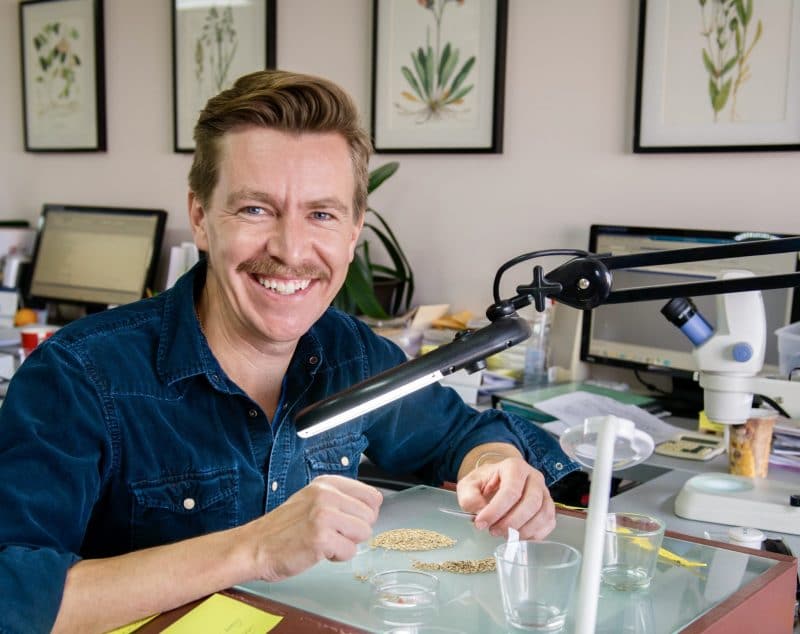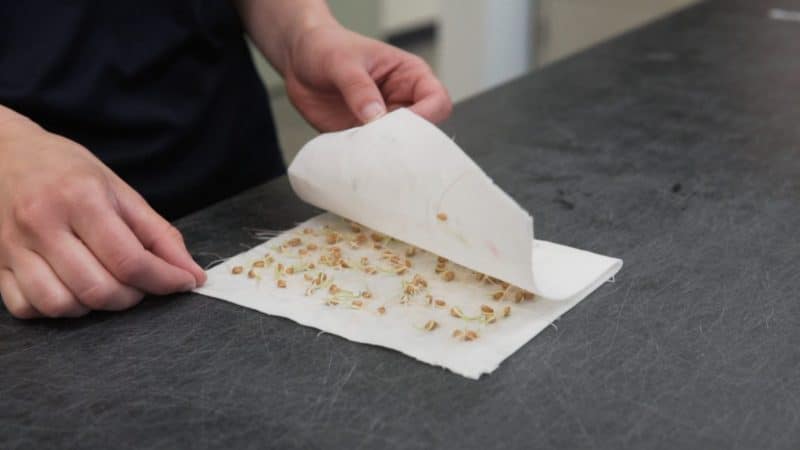Now, more than ever, seed testing provides excellent value as a very small but critical input cost in producing the best crop.
“For a relatively small amount of money, you get a large degree of assurance,” says Morgan Webb, owner and senior seed analyst at Seed Check Technologies in Leduc, Alta. “From vigour, germination and presence of disease, to mechanical purity and seed size, more and more farmers are realizing the value of testing. The cost is so low compared to what you are getting, and spending money on all the other crop inputs when you don’t know your seed quality just doesn’t make any sense. It’s the most affordable and important place to start when putting your crop in.”
Holly Gelech agrees seed quality is the foundation of all crop farm profitability. “With seed quality that’s poor or unknown, there is no remedy that can be applied later on,” says the manager of business development at SGS Biovision, which has locations in Sherwood Park and Grande Prairie, Alta., and Winnipeg, Man. “Seed testing sets the stage for a successful future.”
Gelech says when SGS BioVision’s seed analysts give test results to growers, those clients usually have a suspicion there will be a quality issue due to rain or frost, and they want to know how much of an impact these conditions have had on seed quality. However, no matter what the growing season has been like, Gelech believes more and more farmers now understand that ensuring seed quality is a critical step in their journey to reach their targeted yield the following year.
Sarah Foster, president and senior seed analyst at 20/20 Seed Labs in Nisku, Alta., echoes these thoughts. She says seed testing is important because it can dispel incorrect beliefs and prevent poor decisions resulting from those beliefs.
“People underestimate the sensitivity of seed and think that if the seed looks good, it must be good,” she explains. “However, a seed is a living organism and it often can be struggling to hold onto its vigour due to poor environmental conditions during the growing period. Even uneven maturity can lead to germination issues, and if you don’t get testing after harvest, you will not know what problems will arise at seeding time.”
Gelech also believes the most important testing time is post-harvest. She says it’s “incredibly important” to do testing then, because if you do your testing in April right before cleaning, you may discover you have seed that’s too low in quality and you may not be able to purchase what you need at that point. It may be sold out.
Pedigreed growers, Webb says, generally get tests done post-harvest and also pre-seeding in the spring. This allows them to monitor seed quality throughout the storage season, to see if there are any differences between the fall and after cleaning and storage, and spurs on investigation of the situation if discrepancies are found. If seed is harvested dry and stored well, the seed can hold its vigour, he notes, but many growers find it valuable to do both fall and spring tests to verify that. “Test results in the spring can help pinpoint any storage issues,” he says, “and growers can then hone procedures so that future problems are prevented.” Every year is obviously different, but even if no problems are found, the value of verification either way is very large.

For a relatively small amount of money, you get a large degree of assurance when you seed test, says Morgan Webb, owner and senior seed analyst at Seed Check Technologies in Leduc, Alta. Photo: Seed Check Technologies
Evolution of testing
There are three basic tests, Foster says, when used together are the most powerful pieces of information growers need in order to eventually plant their seed with confidence. A germination test is the basis on which seed is graded as certified or common. A disease test is needed to determine extent of disease presence, as most diseases will result in some loss of seed viability. A vigour test, the most important in Foster’s view, will tell you how robust your seed is and how well it will sustain its viability during storage — an indication of how it will perform in the spring, which is particularly important if it’s looking like you’ll have to seed it into cold and stressful conditions.
With disease testing, Gelech says growers generally have preferences of which fungi to test for depending on their geographical area, but they tend to either want one fungal species or a full fungal scan. Full scans are becoming the norm, she says.
“Many farmers are also asking for a 1000-kernel weight test in the spring on their cleaned samples,” she adds. “Farmers are truly grasping that not only germination and disease matter. Seed size matters, because if you don’t know your 1000-kernel weight, you will overplant, causing competition for nutrients and moisture. You also don’t obviously want to plant too little seed. For pulses, if the stand is inadequate, the weed population has less competition, and if this happens in cereals, you can get tillering, which is good for yield but can cause variability in maturity.”
Webb agrees. He says this year in southern Alberta where the weather has been really dry, checking 1000-kernel weights is particularly important as seed size will be low and vigour also might be a concern. In the north, where this year there has been so much rain and maturity levels are all over the place, he says smut levels in barley will be important to test, as well as all the fungal diseases in peas.
New Tests and What’s to Come
Seed Check Technologies now offers a “radical emergence test” for cereals, which measures vigour. “They keep adding more crop kinds to this test,” Webb notes, “and it provides a better comfort level for vigour for farmers.”
20/20 Seed Labs is now using a thermogradient table, a device that can find the sweet spot for seed to germinate under various temperatures. Foster says it’s been very successful.
This year, SGS Biovision went through the audits and documentation submission to receive accreditation from the International Seed Testing Association. This allows the company to test seed for export, and Gelech says she and her colleagues are working with association staff to investigate which new tests that are currently being used in other countries make sense for use in the Canadian Prairies.





